Buttery, flakey, and decadent. These morning buns are made with laminated croissant dough and tossed in orange scented cinnamon sugar.
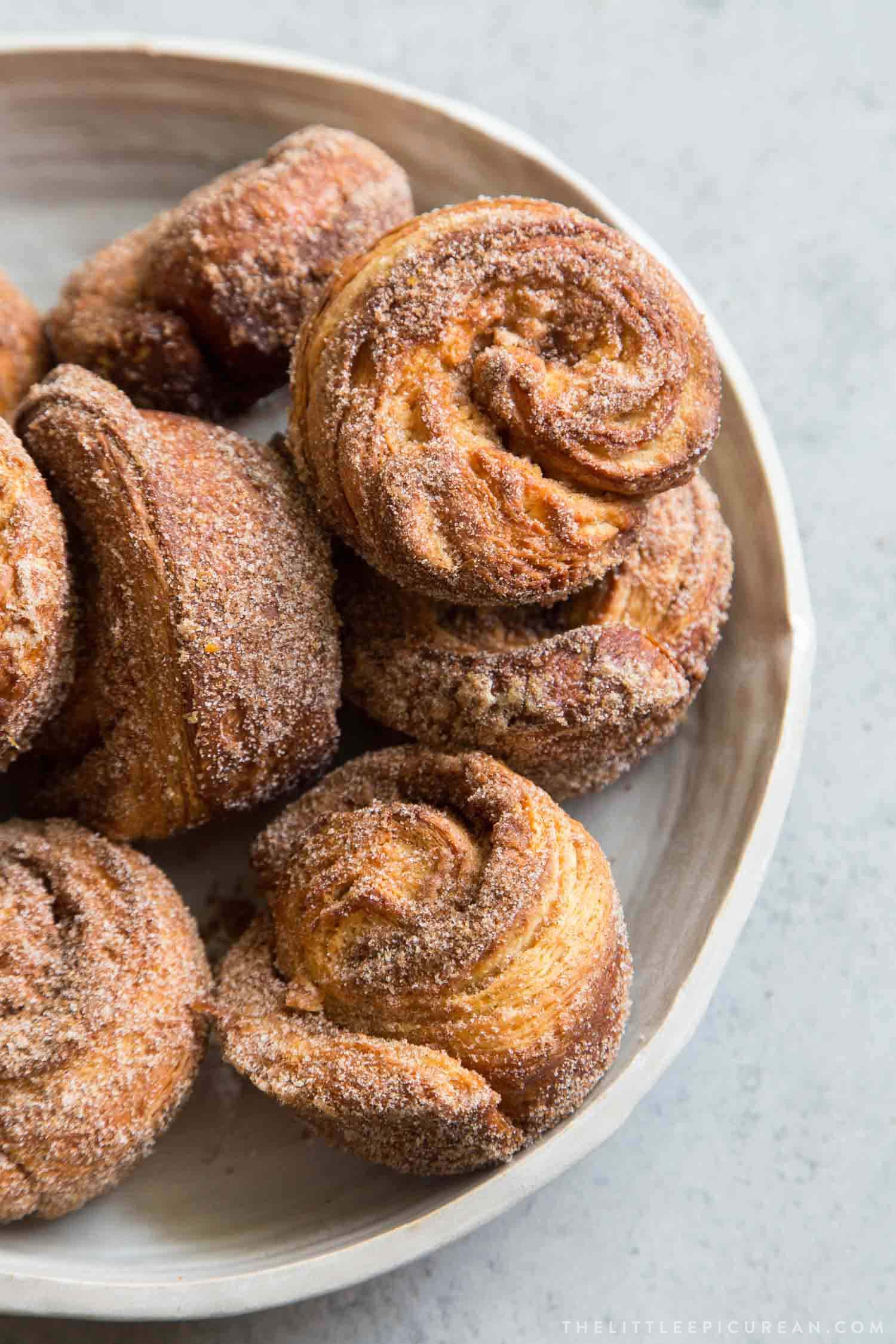
Table of Contents
Cinnamon Sugar Morning Buns
Morning buns should not be allowed for breakfast.
They’re so rich and buttery, and oh so sugary.
But then again, it’s usually the bad things that we can’t get enough of.
I’m not going to sugar coat it. These morning buns take a lot of work, dedication, and patience.
However, if you do decide to make homemade from-scratch morning buns, this version is definitely worth the effort.
Nothing taste sweeter and more satisfying than producing something so delicious with your hands!
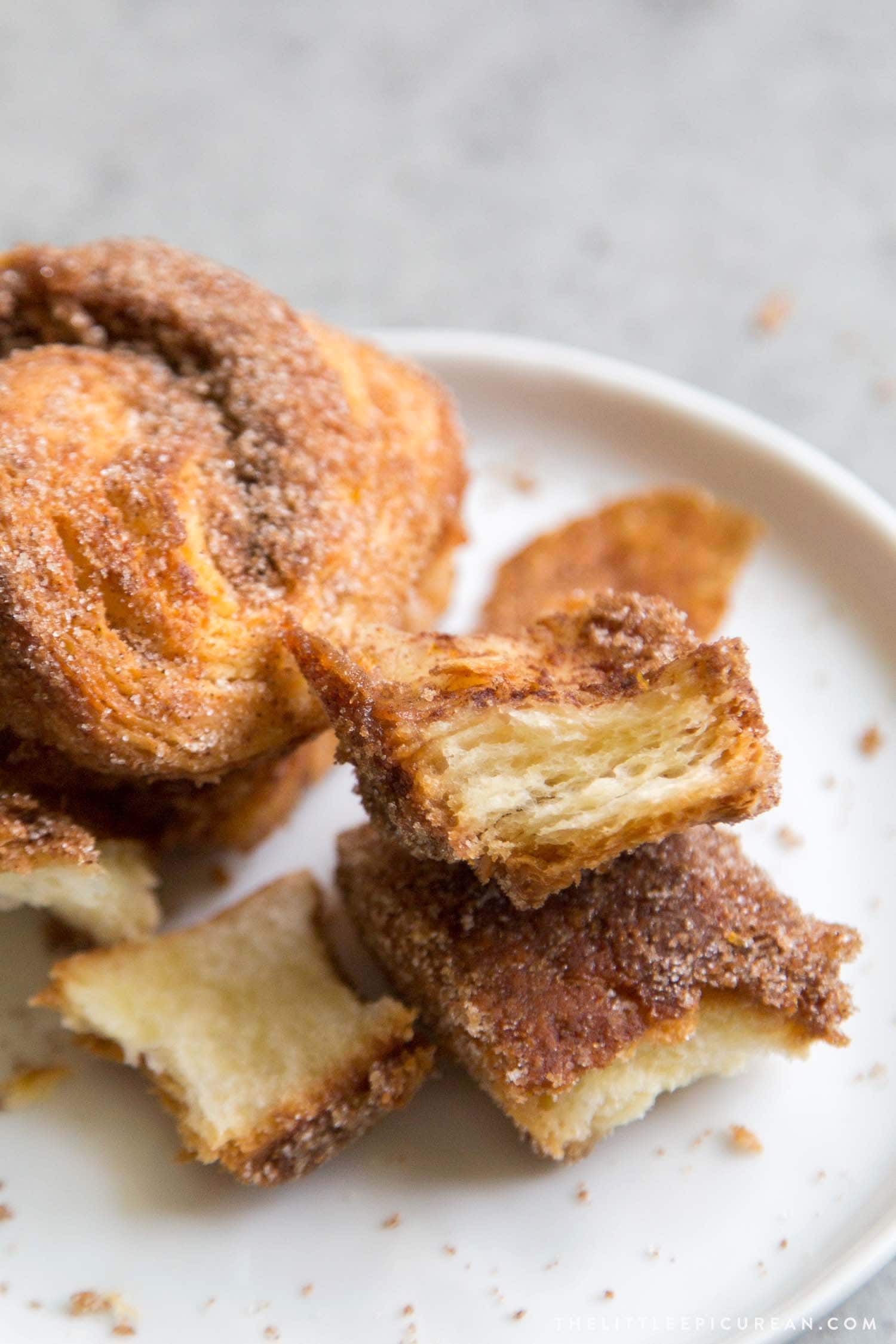
As I’ve mentioned, these morning buns are RICH. See those buttery, flaky layers?
One morning bun will definitely set you up for the ultimate sugar rush and sugar crash. I still say it’s worth it!
What is laminated dough?
Also known as rolled-in dough, laminated dough is a technique that creates alternating layers of fat and dough through a series of folds.
Laminated doughs are best known for croissants and puff pastry.
The layers of fat and dough create the wonderfully textured layers when baked in a high temperature oven.
As the fat (butter) melts and steams in the oven, the dough layers become crisp and distinct.
American Butter vs European Butter
The butter manufactured in the United States are required to have a minimum butterfat content of 80%. Whereas, European style butter has a minimum of 82% butterfat (often higher).
The higher the butterfat content, the silkier and creamier the butter.
Traditional croissants and puff pastry dough require the use of European style butter. (The most popular brand is Plugra butter.)
For this morning buns dough recipe, I used standard American unsalted sweet cream butter. It’s just the run of the mill unsalted butter you’d find at your local supermarket.
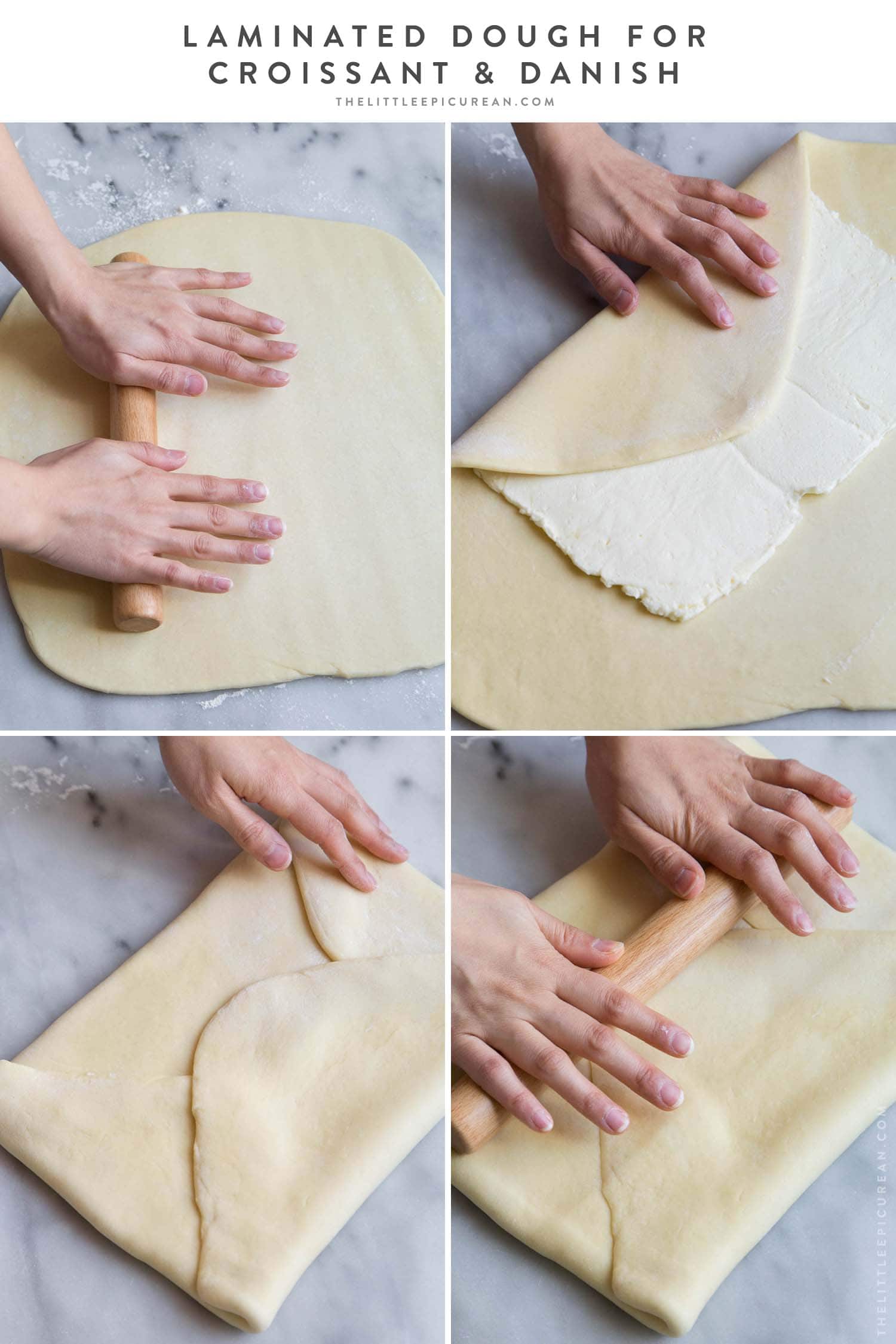
Butter Block & The Envelope Fold
There are several ways to laminate the butter into the dough.
For this recipe, I’m using “the envelope fold.”
As the name suggests, the block of butter is folded into the dough like an envelope.
- Roll dough to the appropriate size to accommodate the butter block.
- Place butter in center of rolled dough.
- Fold the corners of the dough over the butter covering it completely like an envelope.
- Roll over the dough to close seams shut.
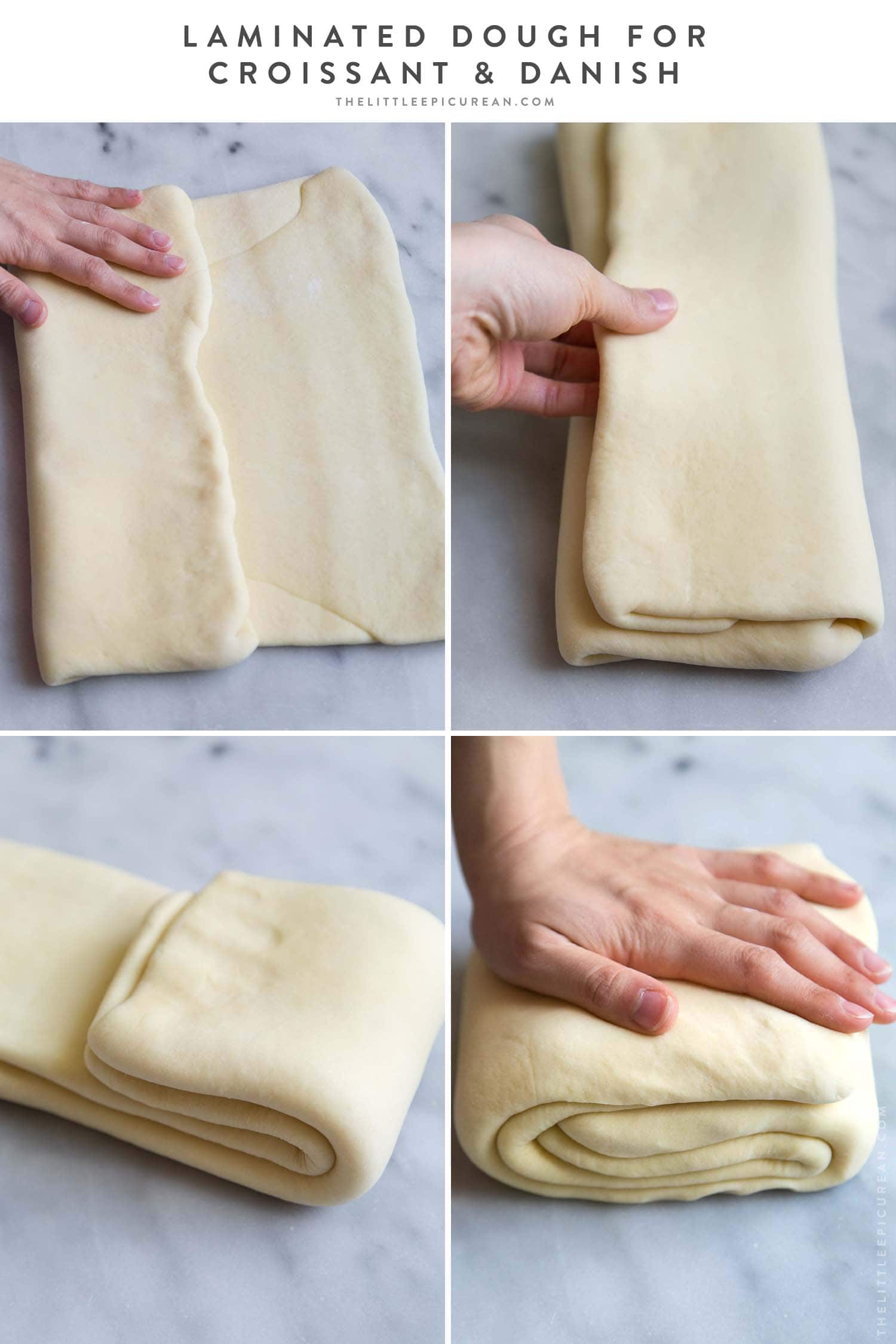
The Letter Fold
Once the butter has securely been fold into the dough, it’s time to create all those lovely layers.
- Roll the dough into a rectangular.
- Fold into thirds like a letter.
- Turn the dough 90 degrees and fold into thirds like a letter once again.
- This folding process is repeated several times.
In between folds, the dough rests in the fridge.
Yeast doughs need time to relax.
The gluten in the dough becomes tighter as the dough is pulled and stretched and folded.
Resting allows the gluten to relax, making the dough easier to roll out.
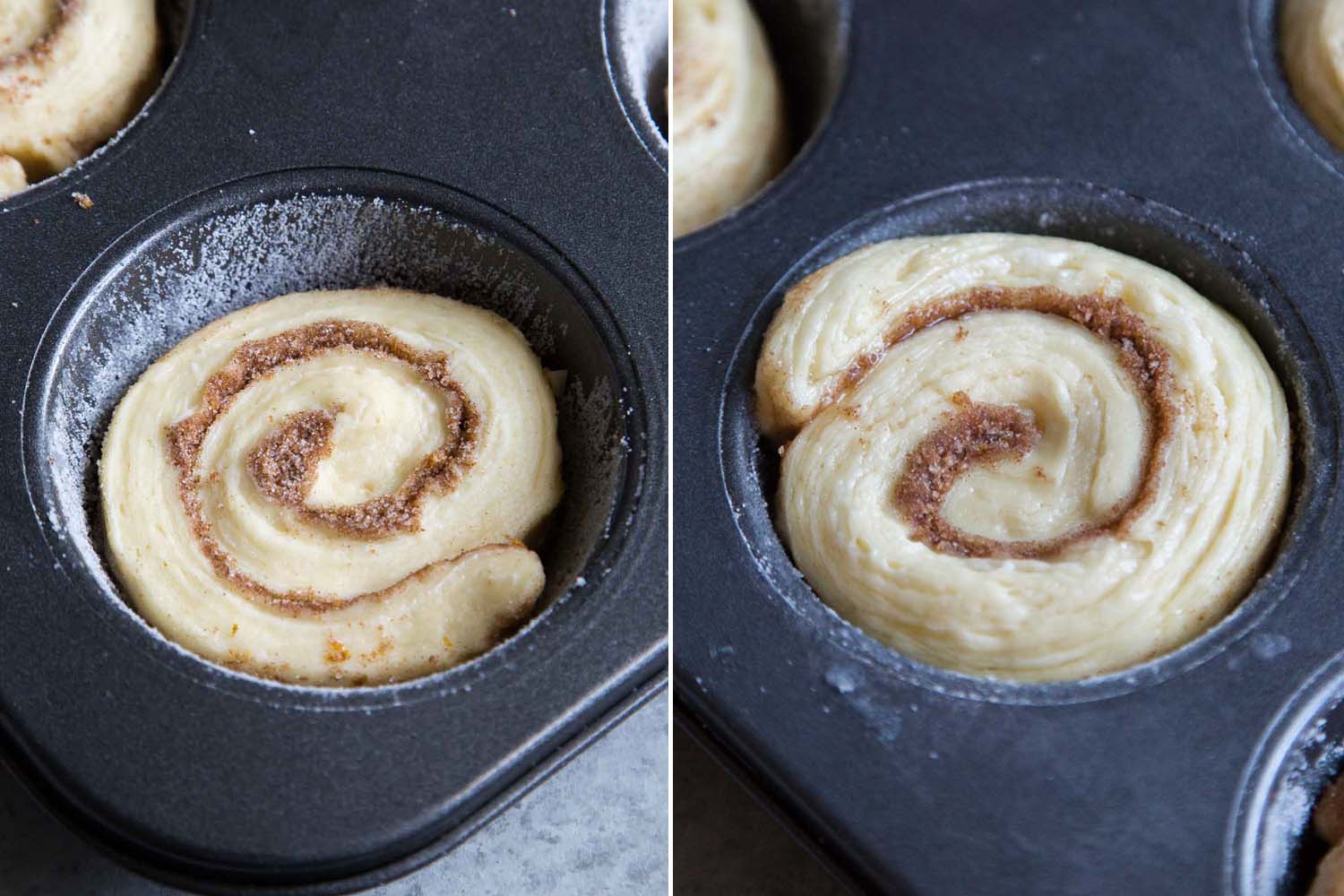
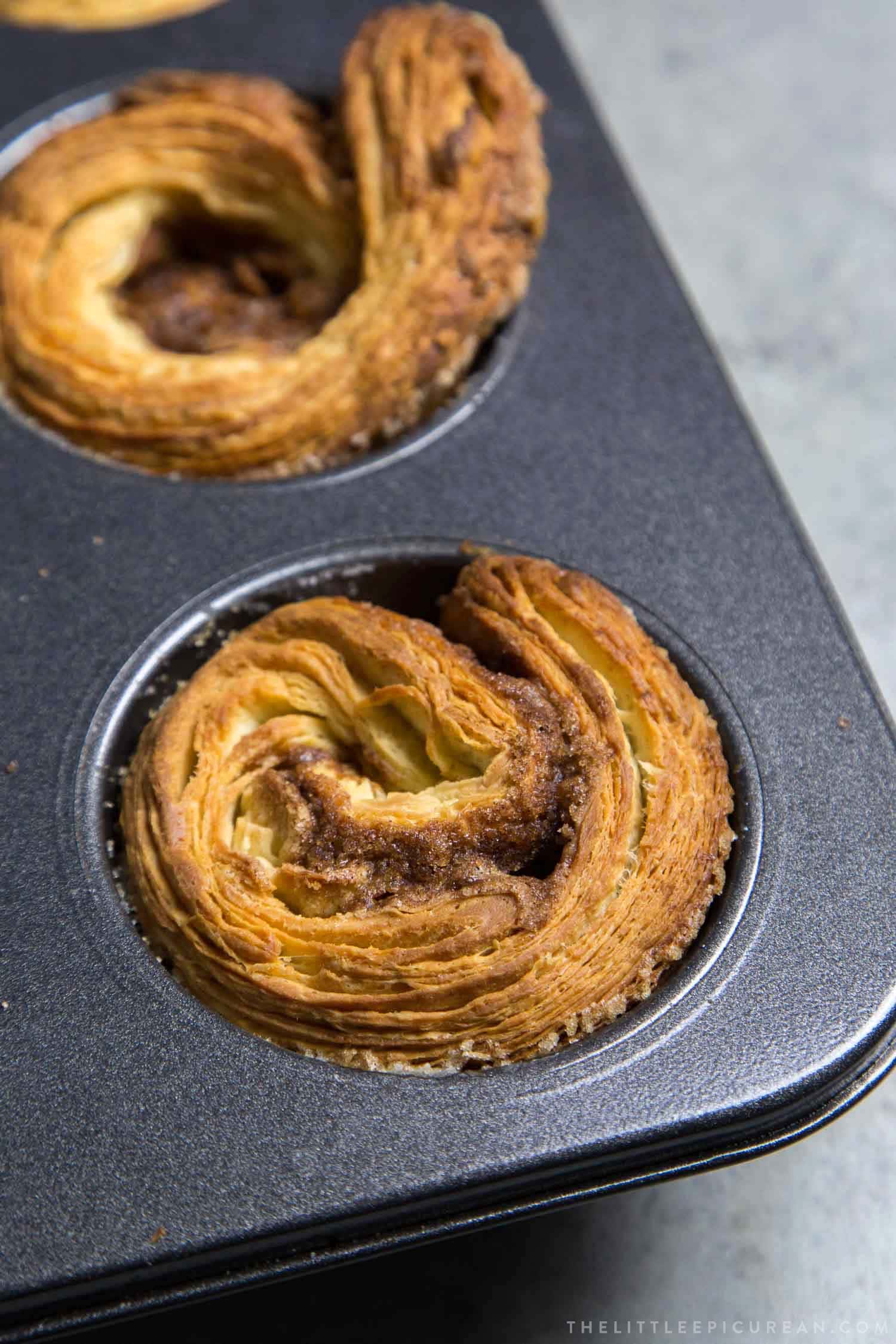
Once the dough has been folded enough times, it is ready to be filled.
Fill the morning buns with orange zest cinnamon sugar. Then, roll them up like cinnamon rolls.
Cut the log into 12 equal portions and set in a giant 6-cup muffin tins.
Rest and rise the dough. They are ready for baking once the dough has puffed up.
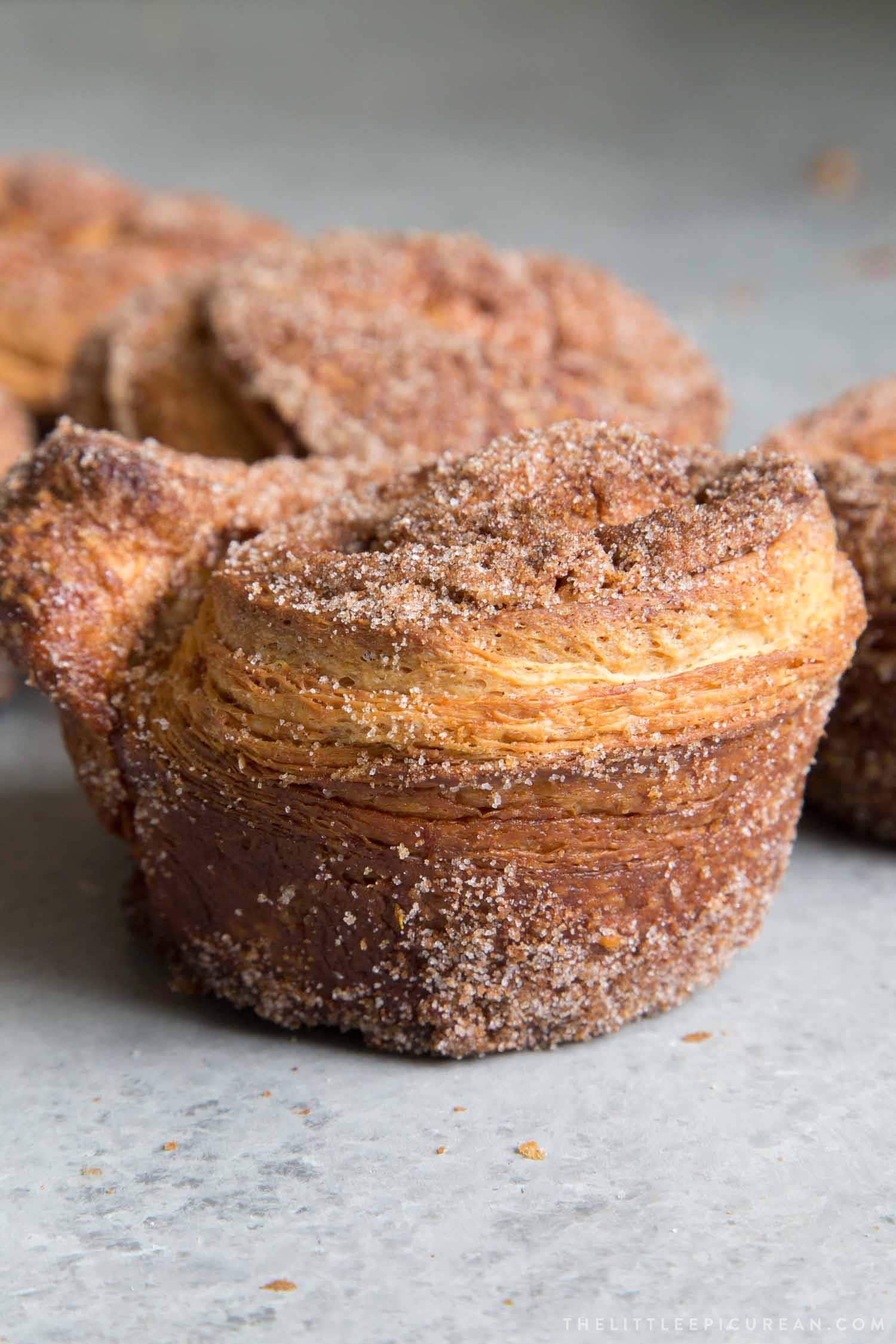
The warm morning buns are lightly brushed with melted butter and tossed in additional orange cinnamon sugar after baking.
It doesn’t get any richer or sweeter than this.
Morning buns are the ultimate layered pastry. Dare I say, even tastier than a croissant!
Not ready to try out laminated doughs? How about trying a simple yeasted dough to gain some courage!
Morning Buns
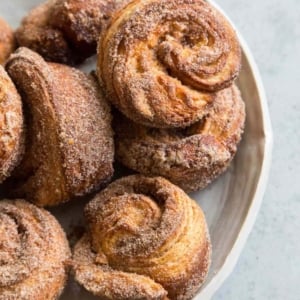
Ingredients
Dough:
- 1 cup whole milk, (227 g)
- 1 large egg
- 1 large egg yolk
- 2 ¼ teaspoon instant yeast, (7 g)
- ⅓ cup granulated sugar, (68 g)
- 4 cup + 1 ½ Tbsp bread flour, (520 g)
- 1 Tablespoon kosher salt, (9 g)
- 3 Tablespoon unsalted butter, (43 g)
Butter Block:
- 1 cup unsalted butter,, cold (226 g)
Filling:
- ½ cup granulated sugar, (100 g)
- ¼ cup brown sugar, , packed (53 g)
- 1 ½ Tablespoon ground cinnamon
- finely grated zest from one orange
- ¼ teaspoon kosher salt
- 6 Tablespoon unsalted butter,, melted/softened (85 g)
Instructions
Dough:
- In the bowl of a stand mixer, whisk together warm milk, egg, egg yolk, instant yeast, and sugar.
- Attach dough hook to stand mixer. Add flour and salt to mixing bowl. Beat until dough starts to form. With the mixing running on low speed, add softened butter one tablespoon at a time. Once all the butter has been added, increase to medium speed and knead until dough is smooth and no longer sticks to the sides of the bowl, about 3-5 minutes.
- Transfer dough to a large greased bowl. Cover with plastic wrap and allow to rest at room temperature for about 2 hours until doubled in size. Meanwhile, prepare butter block.
- Punch down risen dough. Turn out dough onto a lightly floured work surface. Use a small rolling pin, or the palm of your hands, to gently shape dough to a rectangle about 10×8-inches. Place on a parchment lined baking sheet. Tightly cover dough with plastic wrap. Let chill in the fridge overnight.
Butter Block:
- Trace a 8×11 inch rectangle on a parchment paper, turn paper over. Slice butter into tablespoons and arrange within traced rectangle. Cover butter with a second sheet of parchment paper. Use a small rolling pin to beat butter pliable. Use a bench scraper to scoop up butter that goes beyond the 8×11 inch rectangle. Keep beating and reshaping until flat rectangle block is achieved. Cover butter with parchment paper and plastic wrap. Keep chilled overnight in the fridge on a flat surface.
Dough Lamination:
- Remove butter block from fridge. Allow to sit at room temperature for 10 minutes to slightly softened. Meanwhile, place dough on a lightly floured work surface. Roll dough to a 16 x 12 inch rectangle.
- Place butter block in center of rolled dough, making sure the edges of the butter block are perpendicular to edges of dough. Fold the dough over the butter block like an envelope. Using a rolling pin, press firmly onto the seams of dough to seal. Roll dough to a 16 x 12- inch rectangle.
- Turn dough 90 degrees and fold into thirds like a letter. Turn dough another 90 degrees and fold into thirds. Flatten with roll pin. Tightly cover dough and place in the fridge. Allow dough to rest for 1 hour to 90 minutes.
- Place dough back on floured surface. Roll dough to a 16×12-inch rectangle. Fold into thirds. Turn dough 90 degrees and fold into thirds again. Return to fridge for 1 hour to 90 minutes.
- Place dough back on floured surface. Roll to a 16×12-inch rectangle. Fold into thirds. Turn 90 degrees and fold into thirds for the last time. Return to fridge for another 1 hour, or overnight.
Assembly and Baking:
- Brush two giant 6-cup muffin tins with about 1 ½ tablespoon melted butter. Coat with granulated sugar. Tap out excess sugar. Set aside.
- To making filling: In a medium bowl, whisk together sugar, brown sugar, cinnamon, orange zest, and salt. Cover and set aside.
- Allow dough to rest for 5-10 minutes at room temperature. Place on a lightly floured work surface. Roll dough to an 18×12-inch rectangle. Brush 3 tablespoons melted (or softened) butter over dough surface. Sprinkle ½ cup of filling mixture over dough. Reserve remaining filling mixture and set aside.
- Starting at the long end, roll dough into a tight log. Slice log into 12 equal portions. Place rolls in prepared sugar muffin tin. Cover and let rolls rest at room temperature for 45-60 minutes until rolls are puffy and have expanded.
- Preheat oven to 375°F. Uncover risen rolls and bake for 25-30 minutes until deep golden brown, rotating muffin tin halfway through baking.
- Let buns to cool in tin for 8-10 minutes until cool enough to handle. Invert into wire rack. Lightly brush individual buns with remaining melted butter. Toss in remaining sugar mixture. Serve warm or at room temperature.
Notes
- If using dry active yeast, whisk together warm milk, yeast, and 1 teaspoon sugar. Let mixture stand for 5-7 minutes until fragrant and bubbly. Then proceed with remaining ingredients.
- I used two of these 6-cup giant muffin tins to bake these sticky buns.
Nutrition
Nutrition information is automatically calculated, so should only be used as an approximation.
 Like this recipe? Rate & comment below!
Like this recipe? Rate & comment below!Tips and Notes on Laminated Dough:
- Laminated doughs take time and patience. Spread out dough process over several days to make it easier.
- Make initial dough and butter block on Day 1.
- Add butter block to initial dough on Day 2.
- Do all the folds on Day 3.
- Bake on Day 4.
- It is important to allow the dough to rest between folds. The gluten needs to time to relax. If you try to roll and fold overworked dough, the tight gluten will cause the dough to seize up. It will be VERY difficult to roll out.
- Dough must be well covered with plastic wrap when chilling in the fridge. This will prevent dough from drying out or creating an unwanted “elephant skin.”
- Work on a well floured surface. You don’t want the dough you spent hours working on to get stuck to the work surface and expose the butter.
- If dough is difficult to roll out or work with, it simply means it needs time to rest. Cover dough and let chill in the fridge for 30 minutes to an hour before trying again.
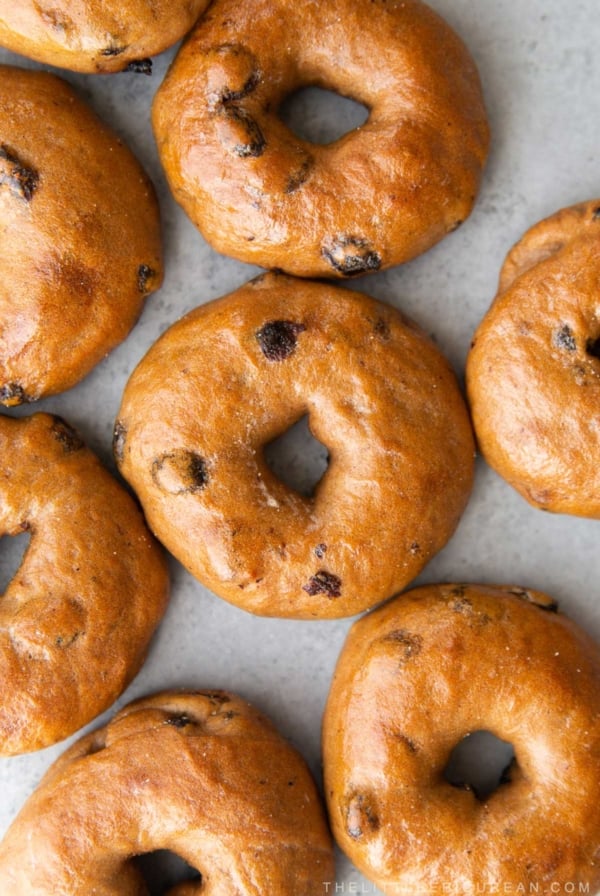
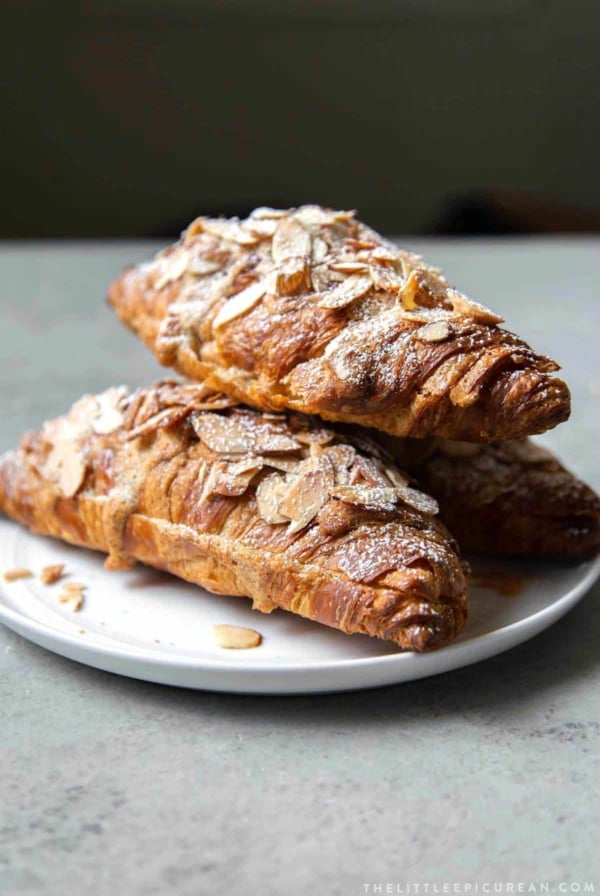

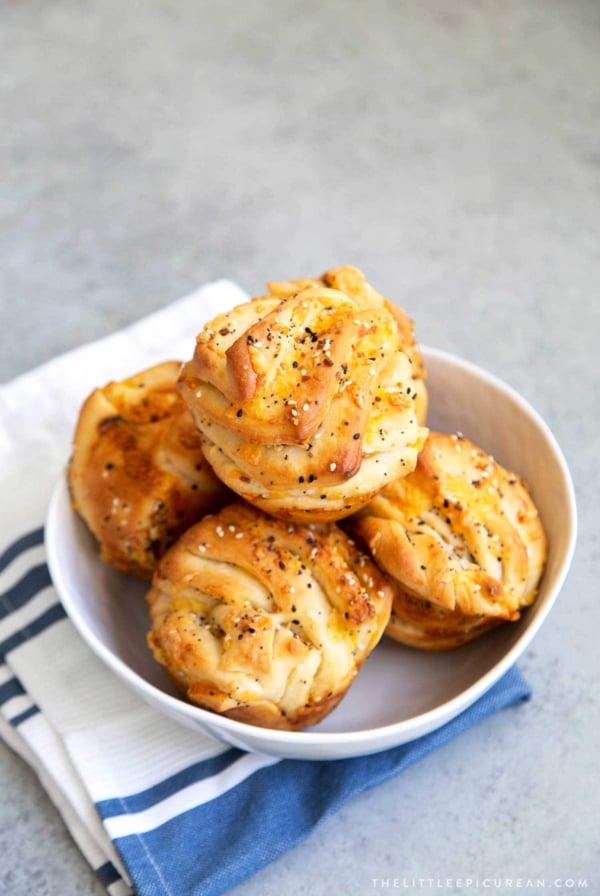





Are the dimensions of the butter and dough correctly?? Seems off no? Hva edouch chilling ..duno how to cover the butter..plz help
X
Yes, the listed dimensions are all correct. Please see the step by step photo instructions that how how to cover the butter with the dough. The photo is labeled” laminated dough for croissant and danish.” You can see how the butter is incased in an envelope of dough.